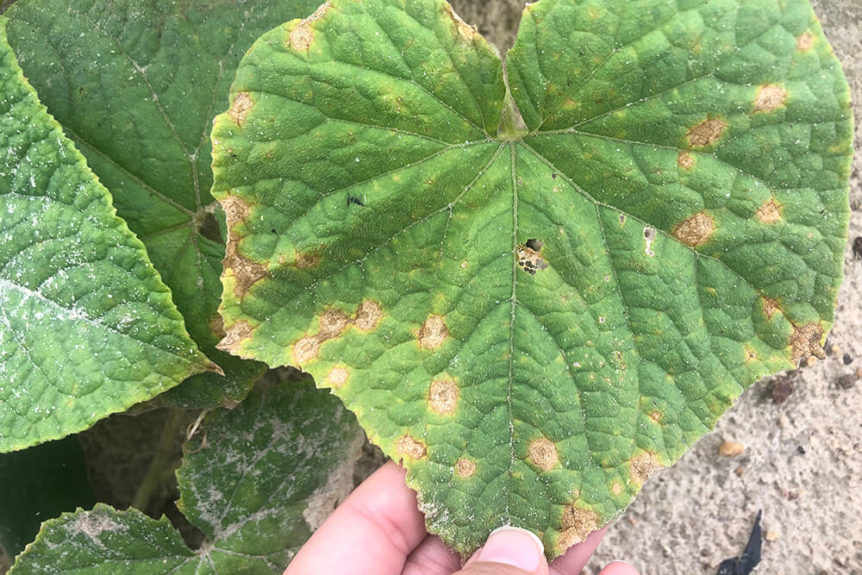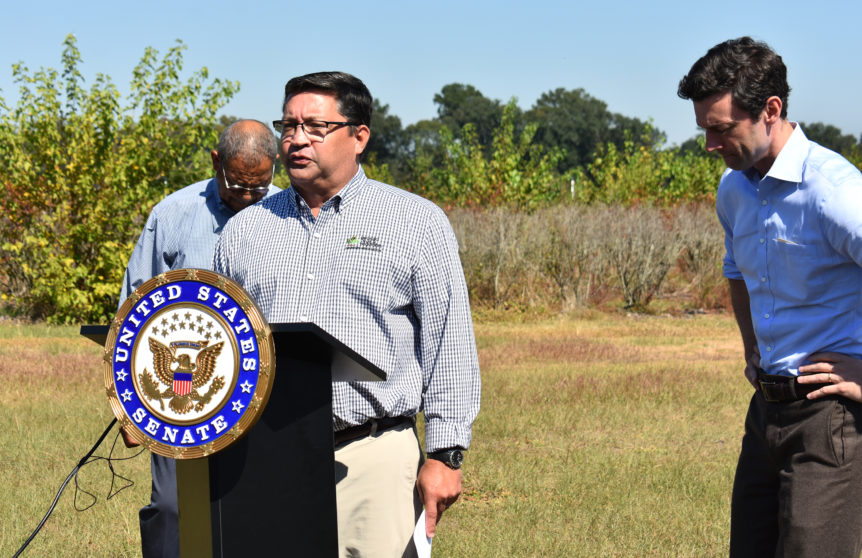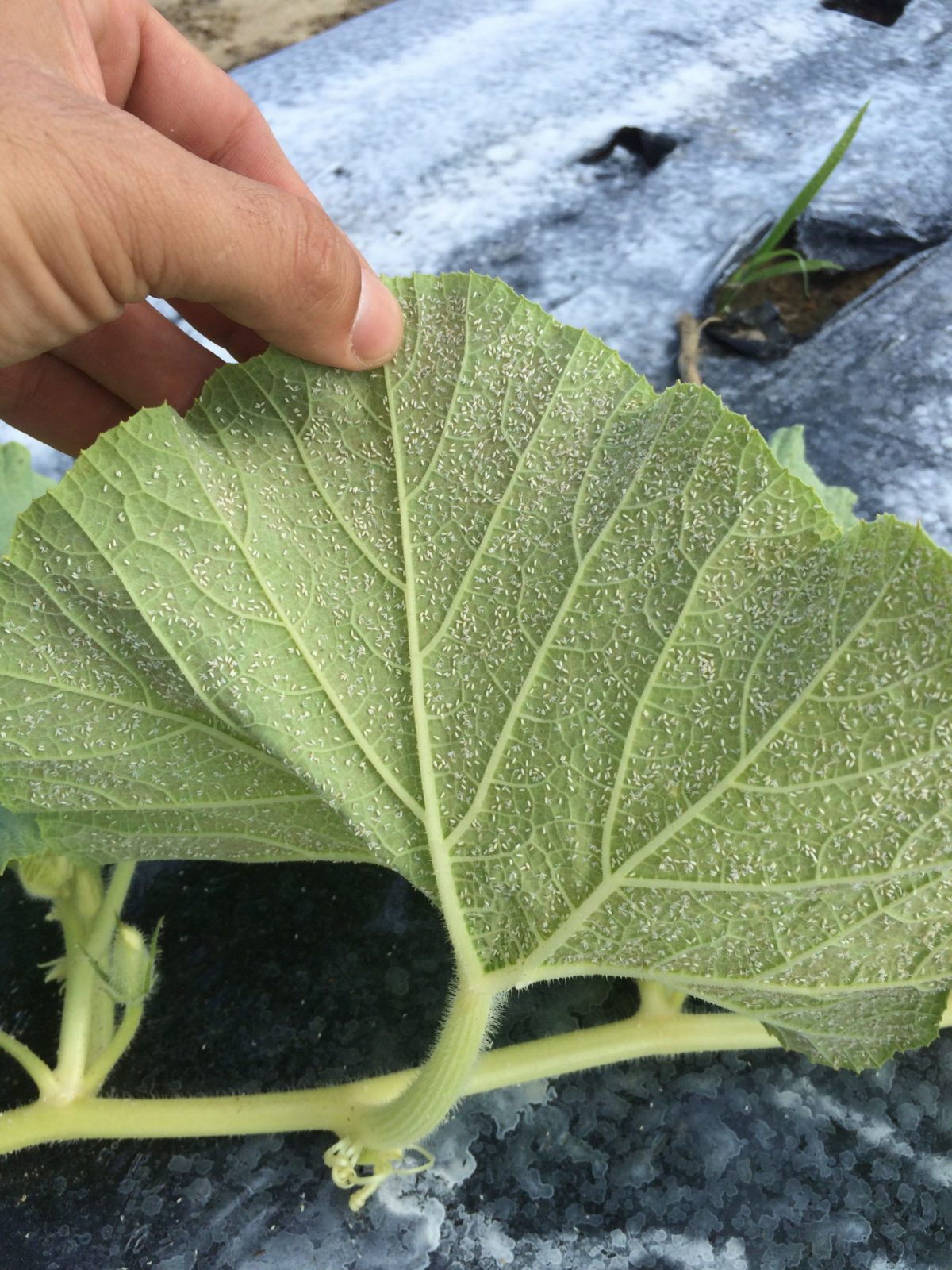Southeast cucurbit producers face numerous challenges in production, leading to decreased profitability and less produce on grocery shelves. Weeds, insect pests and plant diseases are prominent biotic threats. Among the plant diseases, one fungus — Colletotrichum spp., which causes anthracnose — is an emerging threat to watermelon and cucumber production along the east coast. “There is a huge threat from this particular …
How to Prevent Fruit-Boring Squash Insects
By Ayanava Majumdar, Olivia Fuller, David Lawrence and Jacob Kelley Squash and related cucurbits are favorite summer vegetables in farms across the Southeast. Though cucurbits grow fast under the right conditions, numerous insect pests feeding at various crop stages can make cucurbits a messy ordeal! In Alabama, cucumber beetles, squash vine borers and squash bugs arrive routinely during the young …
Alabama Cucurbit Producers: Be Mindful of Cucumber Beetles
Alabama cucurbit producers need to be mindful of looming insect pests they are likely to encounter this growing season. It starts with cucumber beetles, usually the first pest farmers will see this year, according to Ayanava Majumdar, Extension Professor in Entomology and Plant Pathology at Auburn University. “They’ll jump onto the plants right when they’re young. They will start feeding …
Organic Corner: Do’s and Don’ts of Using Hubbard Squash Trap Crop
By Ayanava Majumdar, Olivia Fuller, David Lawrence and Jacob Kelley Have you faced the full onslaught of squash bugs and been frustrated with dead squash plants? Have you battled cucumber beetles and squash vine borers on your farm? If you answered “yes” to one of these questions and are looking for sustainable integrated pest management practices, then it is time …
Imports Continue to Challenge Cucumber Market
Florida and Georgia remain two of the leading cucumber-producing states in the country. Along with Michigan and North Carolina, they harvest more than 60% of the nation’s fresh market acres, according to USDA Vegetable and Pulses April Outlook. However, imports continue to challenge the two states for market supremacy, accounting for more than three-fourths of domestic availability, up from less …
Organic Management Methods for Squash Pests
By Ayanava Majumdar, Rammohan Balusu and Neil Kelly Many pests feed on squash from seedling to harvest. They are generally broken down into two groups: the chewing insects and the sucking insects. Chewing insects of squash consist of common pests like cucumber beetle, squash vine borer larva and pickleworm. Sucking insect pests consist of aphids, squash bugs and whiteflies. The …
Organic management methods for squash pests
By Ayanava Majumdar, Rammohan Balusu and Neil Kelly Many pests feed on squash from seedling to harvest. They are generally broken down into two groups: the chewing insects and the sucking insects. Chewing insects of squash consist of common pests like cucumber beetle, squash vine borer larva and pickleworm. Sucking insect pests consist of aphids, squash bugs and whiteflies. The …
Stem Splitting in Watermelon, Squash and Other Cucurbit Crops
Posted by: Joseph Kemble, Edward Sikora, and Gary Gray/Alabama Extension According to a recent post, over the past several weeks, lower than average temperatures have been common across Alabama. Cucurbit crops (squash, watermelons, cucumbers, cantaloupes, and other small melons) are warm season vegetable crops that can suffer damage when temperatures fall below 60 degrees F. Cold damage is cumulative and …
Stats Don’t Lie: GFVGA Executive Director Explains Need for Assistance with Imports
By Clint Thompson Statistics support claims by industry experts that imports are negatively impacting fresh fruits and vegetables being produced across the Southeast. It’s why Chris Butts, executive director of the Georgia Fruit and Vegetable Growers Association (GFVGA), has been adamant that legislative help is needed and why the Protecting Our Produce Act would be a good first step for …
High Whitefly Populations Across Southern Florida
High populations of whiteflies are being observed across the southern region of Florida, according to the most recent release of the South Florida Pest and Disease Hotline. High population levels are being reported in some watermelon fields in Southwest Florida. However, scouts indicate low, yet increasing population levels in most crops, with nymphs being reported in some older fields. Whitefly …












